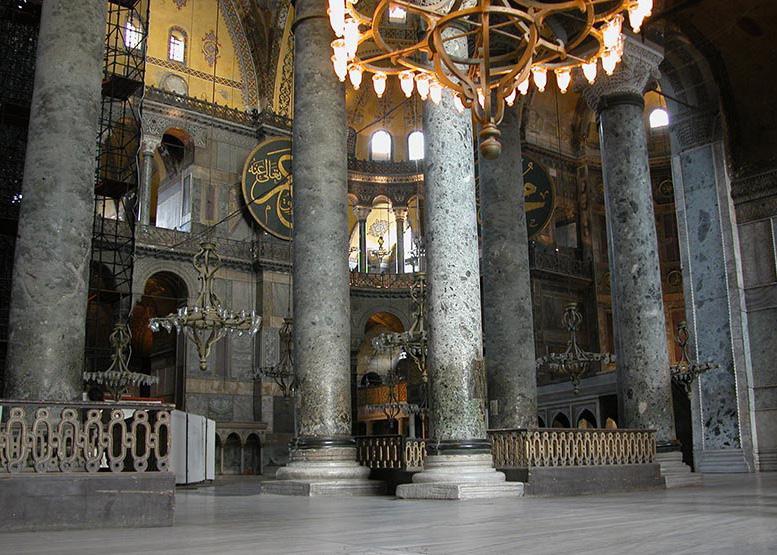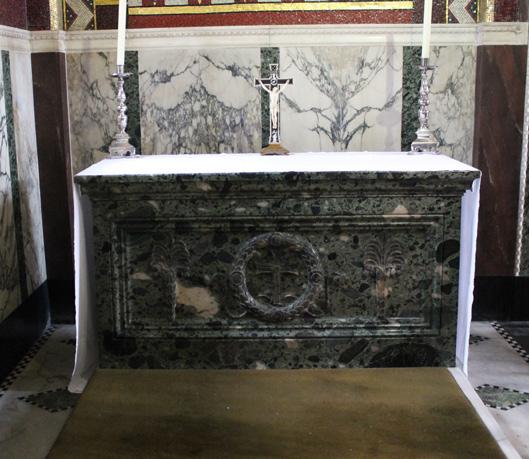
1 minute read
by Patrick Rogers 16
Great columns of Verde antico in Hagia Sophia
With Verde antico again available, demand increased. Blocks measuring thousands of cubic feet were cut direct from the quarry face using a wire saw and columns were installed in the hall of the Old Bailey and the Norwich Union headquarters in Norwich. The cathedral received 11 Verde antico columns which stand between the nave and the aisles and transepts, though at 13ft they are dwarfed by the 48 great columns of Hagia Sophia between 22ft and 25ft 6in in height. Elsewhere in the Cathedral Verde antico panels can be seen in the nave and Grand Organ screen, in the sanctuary and choir apse and in all but one of the chapels. The marble was last used to decorate the entrance porches in 1963 – 64 and for Cardinal Heenan’s tomb in 1976. The Verde Antico Marble Company was wound up in 1912, but others took over, quarrying by a Greek company (Tsalmas Marmi) continuing until 1985.
Classified as an ophicalcite breccia, from the Greek word ophis (meaning ‘snake’), Verde antico is composed of angular pieces of green and black serpentine and white calcite, all cemented together in a lighter green matrix. It is both beautiful and able to bear great weights safely. It was quarried in Thessaly from at least the age of the Roman Emperor Hadrian in the early second century AD to that of the Emperor Justinian in the sixth. Besides Hagia Sophia and other Istanbul churches, such as that of Ss Sergius and Bacchus, there are 24 columns in the nave of St John Lateran in Rome, while others contrast with purple porphyry in the façade of San Marco in Venice. In all there are perhaps 600 columns of the marble in Europe, over 200 in Rome and 11 here in the Cathedral – the first to be quarried in more than 1,300 years.

In the Cathedral, the altar of the Vaughan Chantry is of Verde Antico marble









